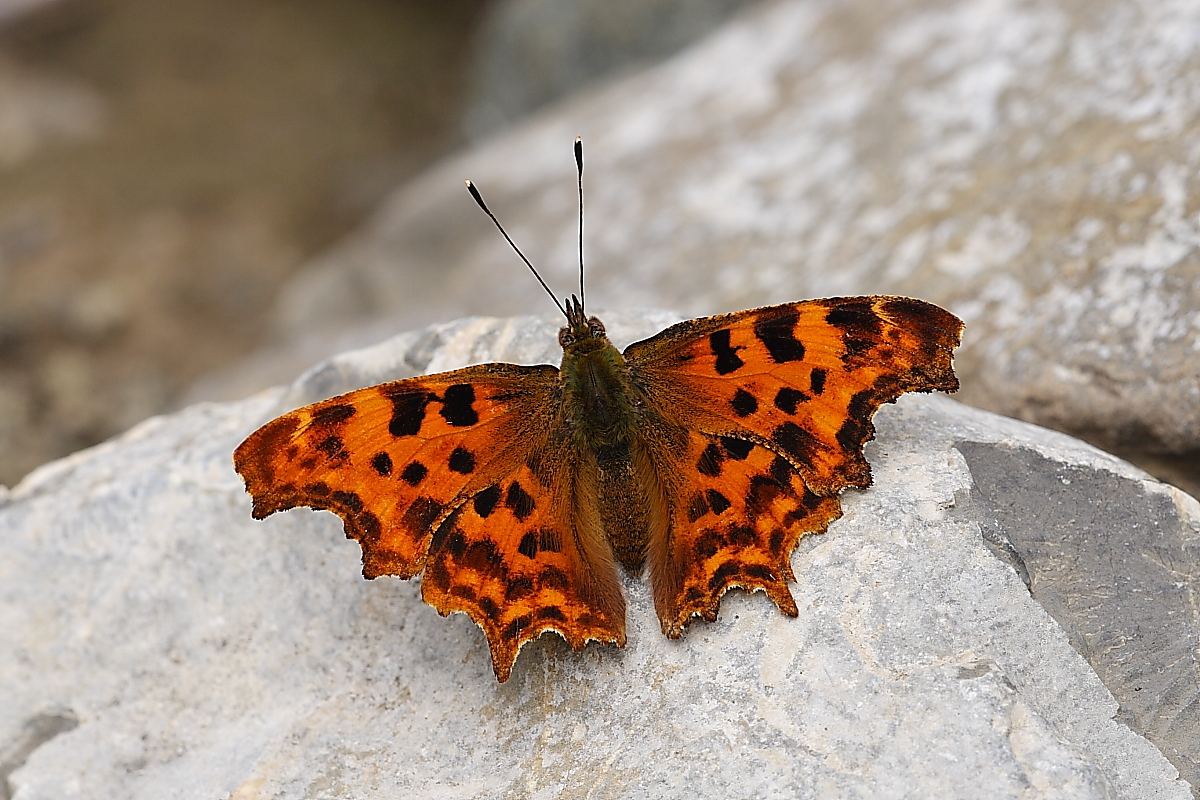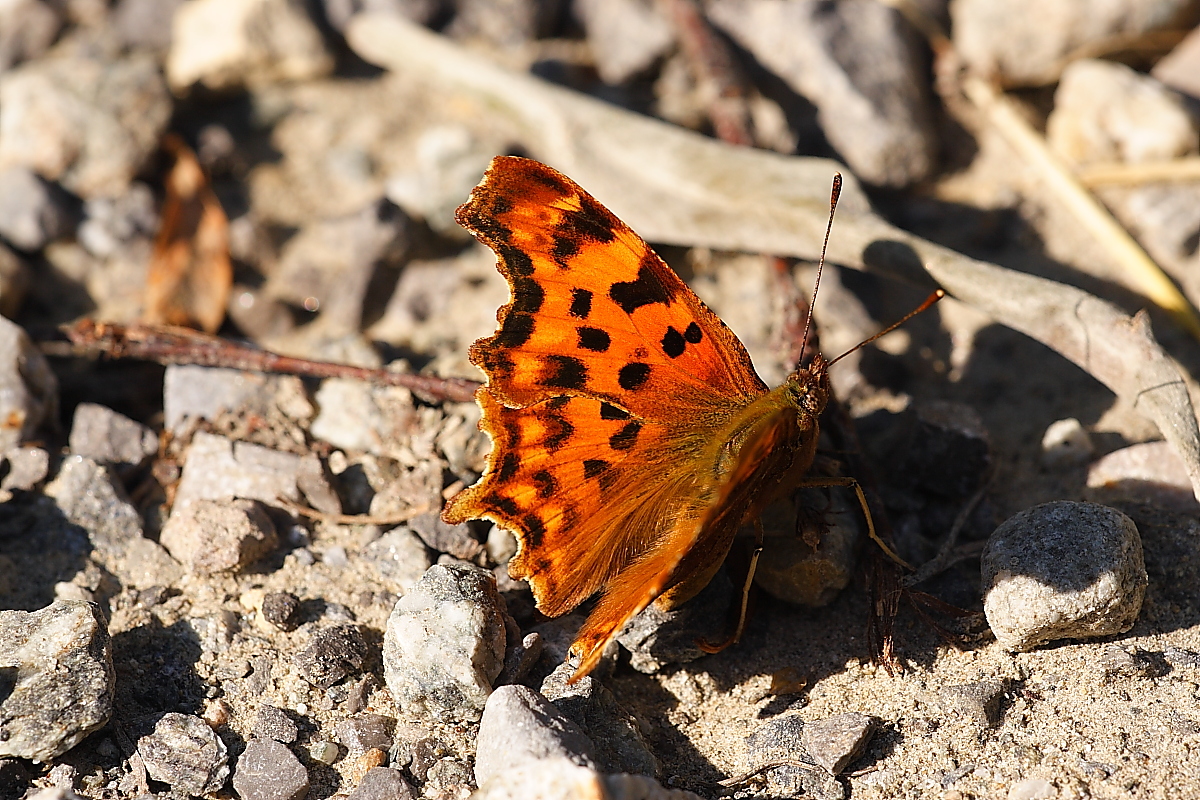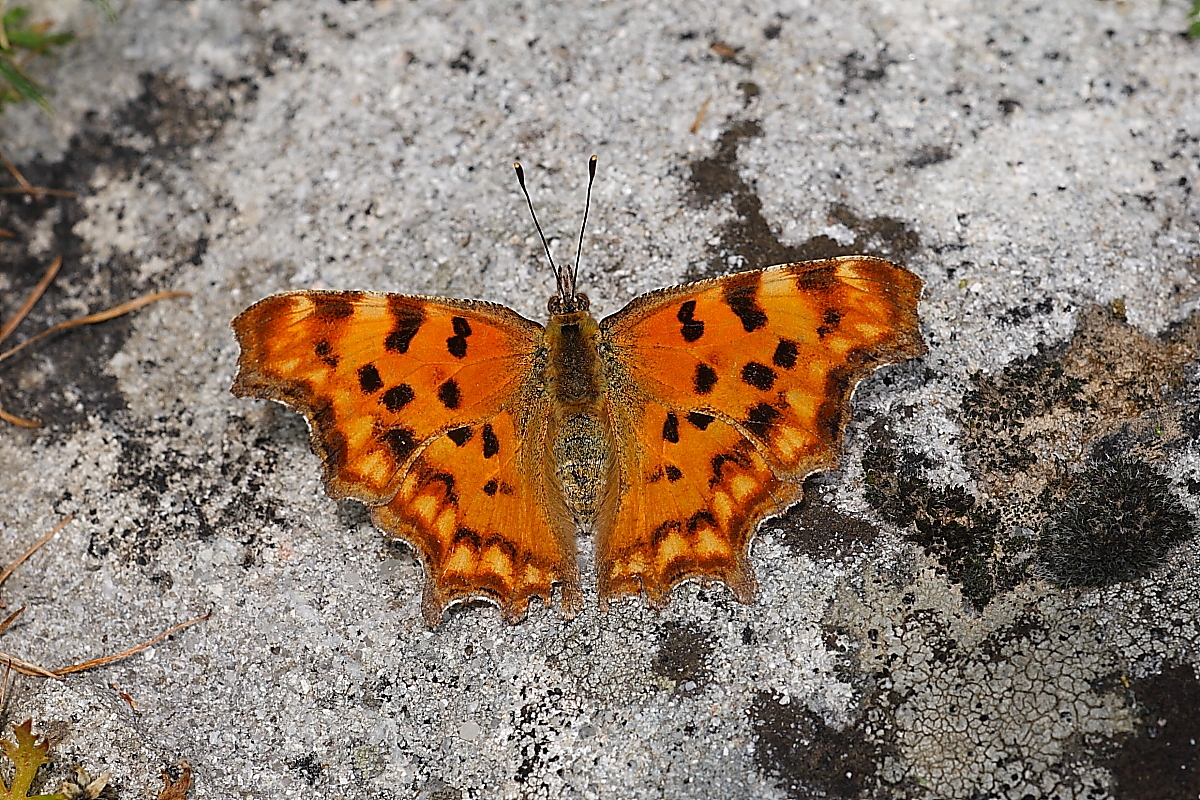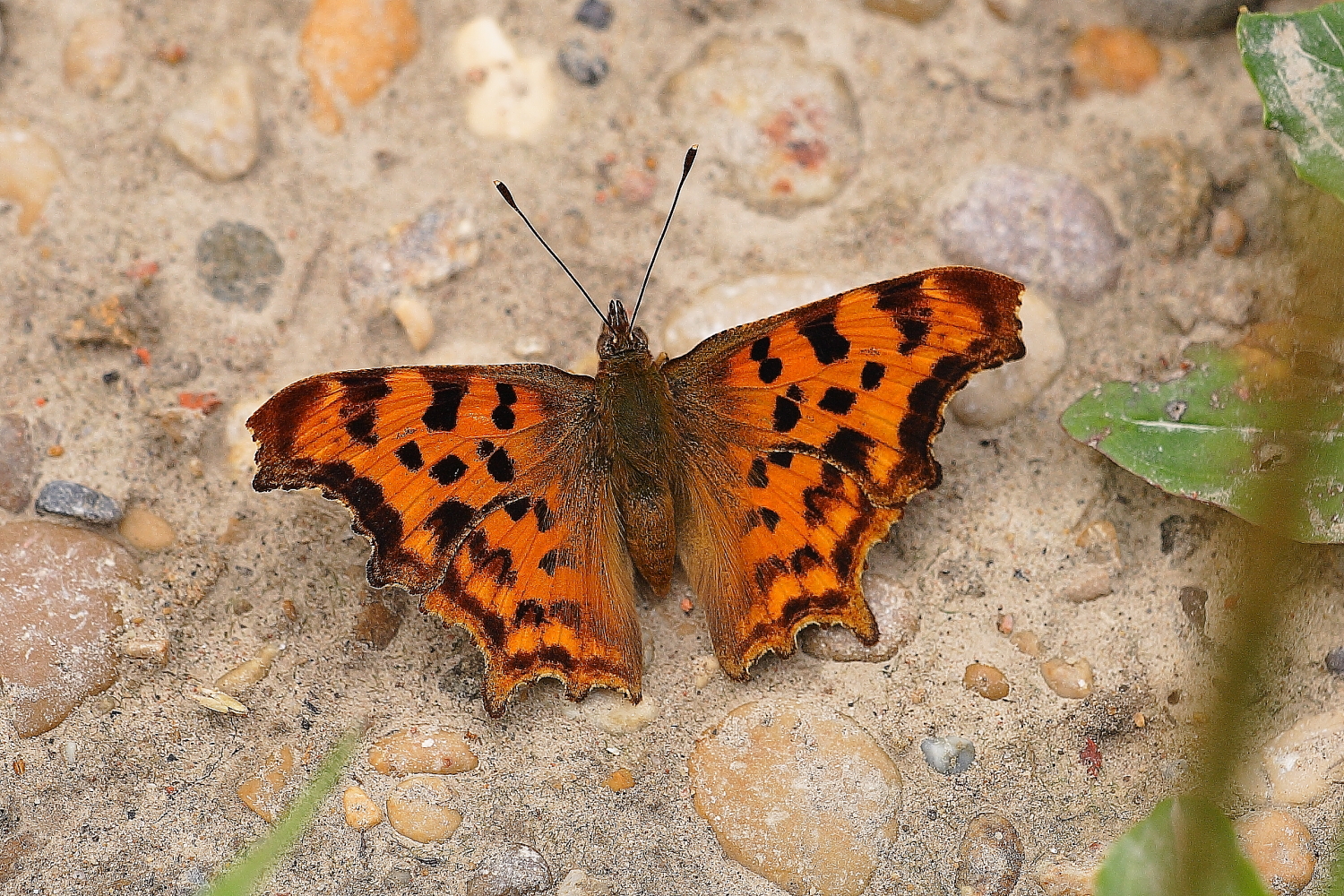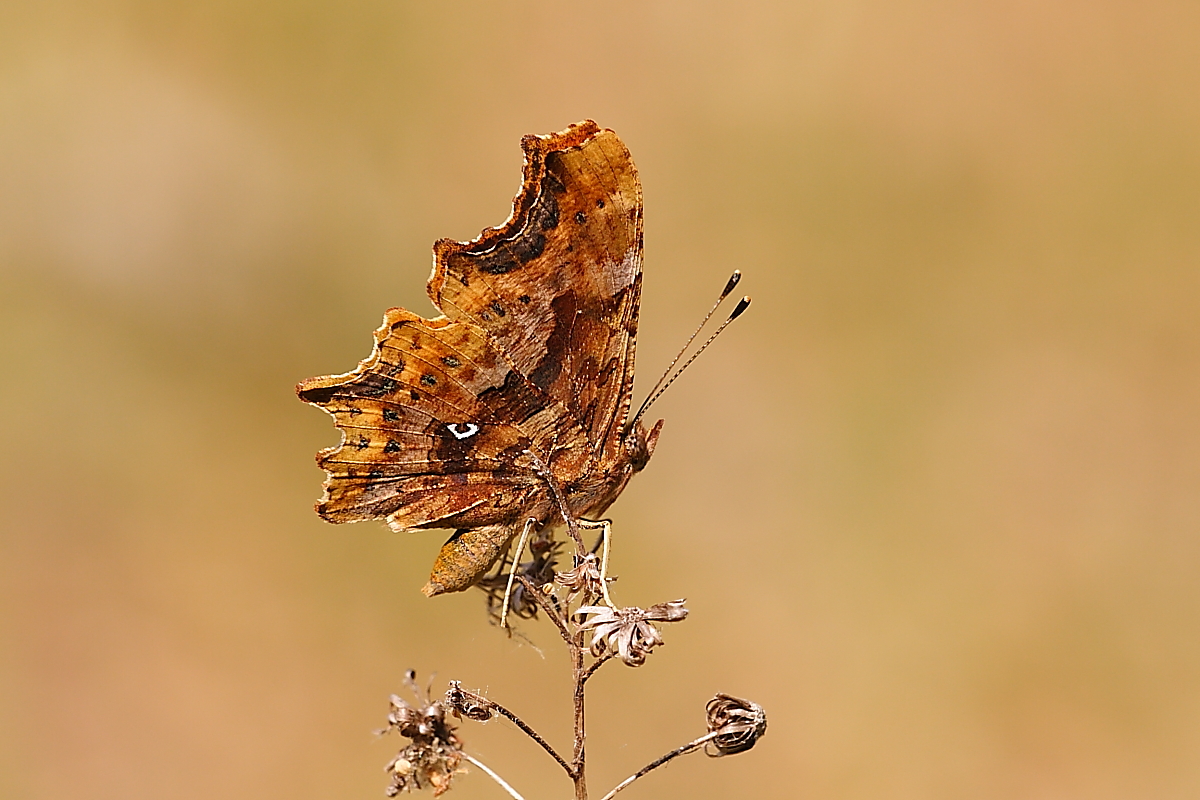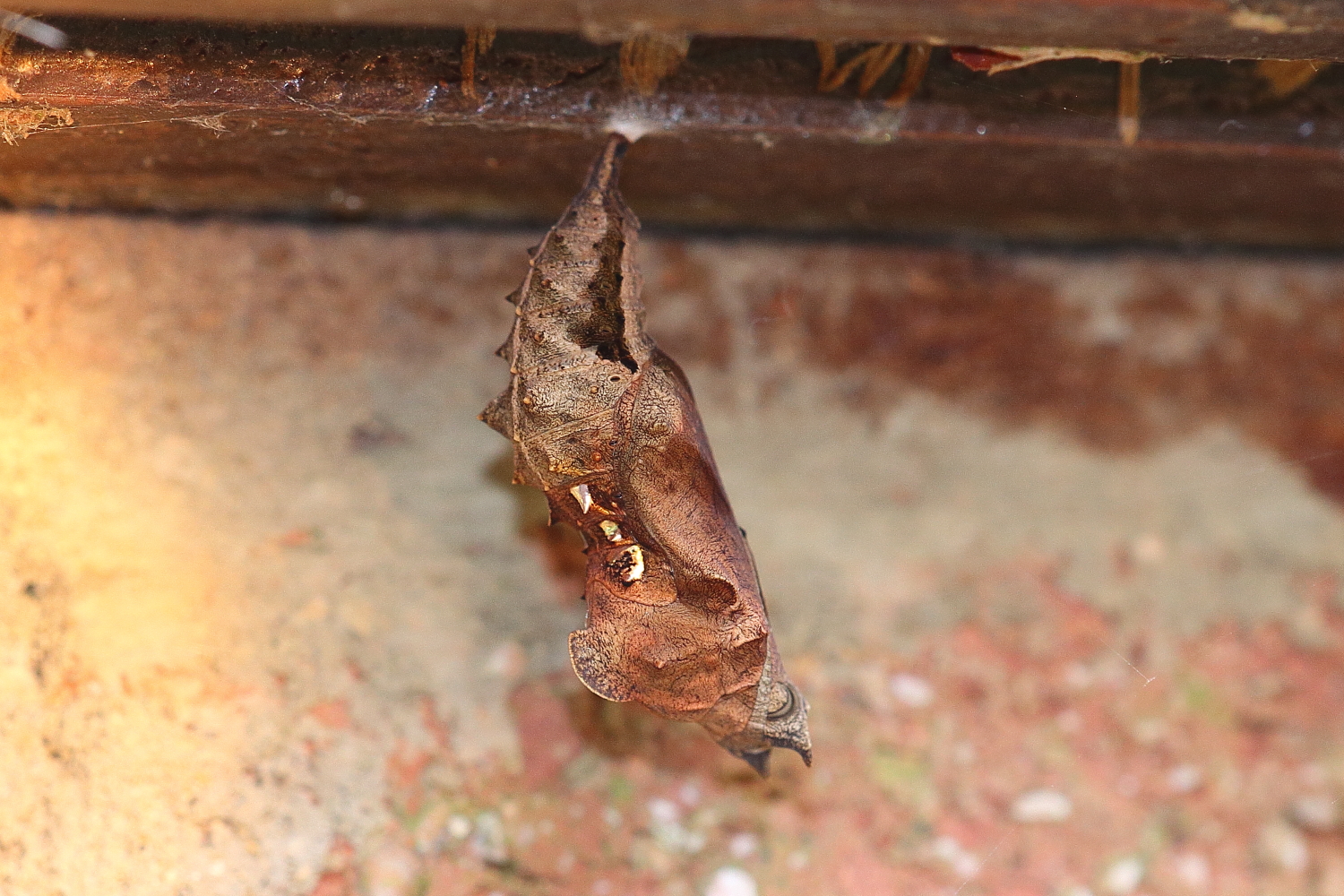|
A very
appealing butterfly that seems, at least in the UK, to have become more
widespread over the past few decades. It hibernates
in foliage where its underside colouring matches dried leaves very well, and the
jagged outline or the wings adds to the camouflage.
The first brood, the
offspring produced by overwintering adults, is known as the form hutchinsoni
with a much lighter underside pattern; it
is not clear to me why a brood, albeit partially dimorphic, should merit a
specific name - this is even more pronounced in the
Map (Araschnia
levana), but no other species as far as I know . |
The
second brood, which hibernates as an adult, is much darker. The uppersides of
the sexes are quite similar, the female being slightly lighter, but the wings of
the female are slightly less jagged.
Its close
relative, the rare (at least in France)
Southern Comma (P. egea) appears
superficially very similar. The main differences are addressed on the egea
page. |












